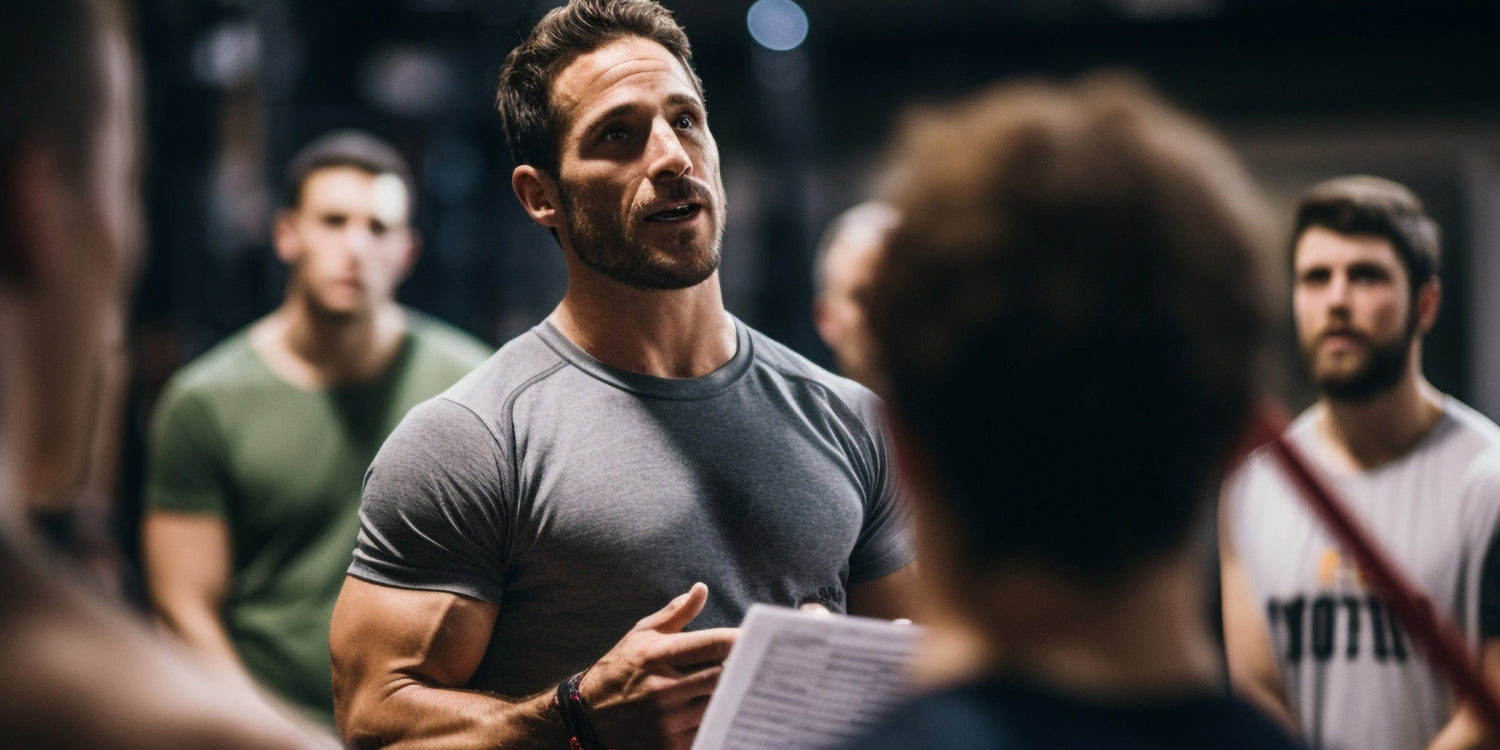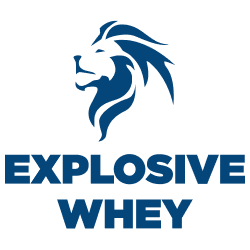Fitness for athletes is paramount for peak performance, encompassing both physical and mental well-being. In the competitive realm of sports, the holistic approach to fitness for athletes goes beyond mere exercise, ensuring a nutrition plan for athletes for success.
Fitness for Athletes for Enhancing Performance with Functional Training

Elevating athletic prowess requires a nuanced approach to fitness for athletes. Tailored workouts integrate strength, agility, and sport-specific drills, epitomizing the essence of fitness training for athletes. This functional training not only builds physical resilience but also sharpens the mental acuity vital for triumph in the world of sports.
Embracing Functional Training for Enhanced Athletic Performance
In the pursuit of optimal athletic performance, embracing functional training for athletes becomes a cornerstone of holistic fitness. This specialized approach goes beyond conventional workouts, focusing on movements intrinsic to sports, thus enhancing both strength and agility.
Understanding Functional Training
Functional fitness involves exercises that mimic real-life movements, emphasizing the interconnectedness of muscle groups. By integrating dynamic and sport-specific drills, this training approach fosters improved coordination and adaptability, addressing the unique demands of athletic endeavors.
Benefits of Functional Training for Athletes
- Enhanced Performance: Elevates overall athletic capabilities, showcasing the profound impact of functional fitness.
- Injury Prevention: Strengthens stabilizing muscles, reducing injury risks in the realm of fitness training for athletes.
- Sport-Specific Agility: Improves agility crucial for precise sports movements, aligning with the core principles of functional training for athletes.
- Core Strength: Develops a robust core, vital for stability and power, integral components of fitness.
- Functional Transfer: Directly applies training to actual sports performance, ensuring practical benefits in the holistic spectrum of fitness for athletes.
Examples of Functional Exercises Targeting Specific Movements
In the realm of fitness training for athletes, specific exercises cater to distinct movements. For example, lateral lunges enhance lateral mobility crucial for sports like basketball, showcasing the tailored nature of functional training. Incorporating such exercises ensures a targeted approach, aligning with the unique physical demands of various sports within the framework of functional fitness.
Strength Training Essentials for Athletic Development

Importance of Strength Training
In the realm of fitness for athletes, the significance of strength training cannot be overstated. Beyond mere muscle development, it forms the bedrock for enhanced athletic performance, contributing to power, endurance, and injury prevention in fitness training for athletes.
Proper Form and Technique
When delving into workouts for athletes, prioritizing proper form and technique is paramount. It ensures not only optimal muscle engagement but also minimizes the risk of injuries, reflecting a meticulous approach to fitness.
Key Exercises for Muscle Groups
Within the spectrum of fitness training for athletes, key exercises targeting specific muscle groups take center stage. From compound movements like squats benefiting multiple muscles to isolated exercises fine-tuning particular areas, crafting a comprehensive regimen contributes to a well-rounded workout for athletes.
The Role of Unilateral Exercises in Athletic Fitness

Significance of Unilateral Exercises in Athletic Fitness
Unilateral exercises play a crucial role in enhancing athletic fitness by focusing on individual limbs and providing a well-rounded approach to fitness training for athletes. These exercises engage one side of the body at a time, promoting balance and stability, vital components for sports performance. Incorporating unilateral exercises in fitness routines helps prevent muscle imbalances, contributing to overall athleticism.
Benefits of Unilateral Exercises for Athletic Fitness
- Unilateral exercises enhance balance and stability, crucial for overall athletic fitness in training athletes.
- Targeting specific muscle groups, these fitness-oriented exercises improve functional strength and coordination for athletes.
- Incorporating unilateral movements in fitness training helps prevent muscle imbalances, promoting overall athleticism and fitness for athletes.
- Improved proprioception from unilateral exercises contributes to enhanced body awareness, supporting athletes in their fitness journeys.
- These fitness-focused exercises play a vital role in injury prevention, ensuring athletes maintain a resilient physique for the demands of their sports.
- Enhanced Core Strength for Athletic Fitness: Unilateral exercises engage the core extensively, fostering a robust midsection that is fundamental for overall fitness in athletes.
- Increased Functional Flexibility: Integrating unilateral movements enhances flexibility, a key component of athletic fitness, promoting a broader range of motion essential for peak performance.
- Sport-Specific Adaptations: Unilateral exercises simulate real-life sporting movements, translating to improved athleticism as athletes develop the fitness capacity required for their specific sports.
- Dynamic Stability Improvement: These exercises challenge dynamic stability, refining an athlete's ability to maintain control during unpredictable movements, and elevating overall fitness for athletes.
- Preventing Over-Reliance on Dominant Limbs: Unilateral exercises address muscle imbalances between dominant and non-dominant limbs, promoting symmetry and reducing the risk of overuse injuries, which is essential for sustained athletic fitness.
Incorporating Handstand Training into Athletic Routines

Improving Core Strength
Incorporating handstand training into athletic routines is a dynamic approach to enhancing core strength for athletes in fitness training. Handstands engage the abdominal muscles, promoting a robust core foundation essential for overall fitness. This not only aids in athletic performance but also contributes to a balanced and resilient physique.
Enhancing Body Control
Handstand training is a valuable tool for improving body control, specifically tailored for fitness training for athletes. Mastering this skill refines proprioception and spatial awareness, key components for athletes seeking heightened control in their movements. Enhanced body control achieved through handstand training translates to improved performance in various athletic endeavors.
Tips for Incorporating Handstand Training
- Elevate fitness for athletes by integrating handstand drills to enhance core strength and stability.
- Boost body control in athletic routines by mastering handstand techniques, and refining spatial awareness for fitness.
- Achieve optimal fitness for athletes benefits by gradually incorporating handstand training into your overall workout regimen.
- Patience and consistent practice are key for athletes aiming to reap the full fitness for athletes advantage of handstand exercises in their fitness journey.
- Enhanced Shoulder Strength for Athletic Fitness: Handstand training places significant demand on shoulder muscles, contributing to robust upper-body strength essential for overall fitness in athletes.
- Integrated Skill Progression: Introduce handstand variations progressively, ensuring a gradual skill development that aligns with athletes' fitness levels, maximizing the fitness benefits of this challenging exercise.
Common Mistakes in Athletes' Farmer's Carry Technique
Incorrect Posture
Maintaining the right posture during a Farmer's Carry is vital for fitness in athletes. Proper fitness training for athletes emphasizes a straight back and engaged core. Incorrect posture not only hinders the effectiveness of the exercises for athletes but may lead to discomfort or injury. Athletes should focus on aligning their spine, promoting optimal fitness benefits while performing Farmer's Carry.
Grip Strength Errors
Grip strength is a cornerstone of fitness for athletes, especially in exercises like the Farmer's Carry. Common mistakes involve holding weights too tightly or not firmly enough. Fitness training for athletes should prioritize a balanced grip to ensure optimal engagement of forearm muscles. Addressing grip strength errors enhances the effectiveness of the Farmer's Carry, contributing to comprehensive fitness improvements.
Uneven Weight Distribution
Maintaining proper weight distribution is crucial for athletes in fitness training during a Farmer's Carry. Uneven weights can lead to imbalances, affecting both sides of the body differently. Fitness for athletes relies on symmetrical engagement, and addressing uneven weight distribution ensures a well-rounded workout. Athletes should be mindful of equal weight on each side to maximize the fitness benefits of the Farmer's Carry.
Designing an All-Around Athlete Workout Program
Balanced Approach
For athletes, a balanced fitness-for-athletes program is key. It blends strength, endurance, and flexibility training, ensuring readiness for diverse sports demands. This comprehensive approach enhances overall athletic performance through effective fitness training for athletes.
Individualized Plans
In fitness for athletes, personalized plans are crucial. Tailoring workouts to individual needs, considering factors like fitness levels and injury history, ensures targeted training. This individualized approach optimizes overall fitness and performance, surpassing generic programs.
Selecting Effective Strength Training Programs for Athletes
Athlete's Goals
Tailoring fitness training for athletes programs to an athlete's goals is crucial for effective fitness training for athletes and intake of protein supplements. Whether aiming for increased power or muscle endurance, aligning the program with specific objectives ensures targeted fitness benefits.
Individual Abilities
Considering individual abilities is paramount in selecting fitness-oriented strength training programs for fitness for athletes. Programs should account for varying fitness levels, promoting gradual progress to minimize injury risk and maximize overall effectiveness.
Program Intensity
Balancing intensity is critical in fitness training for athletes, ensuring challenging workouts without risking burnout or injuries. Tailoring program intensity to an athlete's fitness level and goals promotes sustainable progress and long-term success.
Resistance Training
In the realm of fitness training for athletes, resistance training stands as a cornerstone. This form of training involves lifting weights to build strength, targeting specific muscle groups crucial for athletes. By incorporating resistance exercises into an athlete's fitness regimen, individuals can enhance overall strength, contributing to improved athletic performance.
Power Exercises
Comprehensive fitness training for athletes, power exercises play a pivotal role. These dynamic movements focus on explosive strength, vital for activities requiring quick and forceful actions. Integrating power exercises into fitness for athletes' routines enhances agility, speed, and overall athletic prowess, fostering a well-rounded approach to physical conditioning.
Functional Training's Impact on Speed, Power, and Balance

- Speed Enhancement: Functional training enhances agility and quickness, directly impacting an athlete's speed on the field or court.
- Power Amplification: Incorporating functional exercises into a training routine elevates an athlete's explosive power, crucial for dynamic sports performance.
- Improved Balance: Targeted functional training drills promote better balance, a key element for stability and injury prevention in athletic pursuits.
- Sport-Specific Adaptations: Functional training mimics real-life movements, facilitating a seamless transfer of skills to an athlete's chosen sport.
- Joint Stability: Functional exercises strengthen stabilizing muscles around joints, contributing to injury resilience and sustaining long-term athletic prowess.
- Holistic Athletic Performance: The multifaceted impact of functional training synergizes speed, power, and balance, fostering a comprehensive improvement in an athlete's overall performance.
Improving Agility and Explosiveness
In fitness training for athletes, balance training plays a crucial role in enhancing agility and explosiveness. By incorporating exercises that challenge stability, athletes can improve their ability to change direction rapidly and generate powerful movements. This integral aspect of fitness for athletes contributes significantly to overall athletic performance.
Role of Balance Training
The role of balance training in fitness for athletes extends beyond stability—it actively contributes to improved coordination and proprioception. Such enhancements are paramount for athletes seeking to refine their ability to control their bodies during dynamic movements. Integrating balance exercises into fitness training for athletes' routines ensures a comprehensive approach to physical conditioning and performance optimization.
Analyzing the Benefits of Strength Training for Athletes
- Enhances Overall Fitness for Athletes: Strength training contributes to a well-rounded athletic fitness regimen, improving endurance, flexibility, and coordination.
- Injury Prevention: Integrating strength training into an athlete's fitness routine enhances muscle and joint stability, reducing the risk of injuries.
- Sport-Specific Performance Gains: Tailoring strength training to specific athletic demands boosts performance, translating into improved fitness for athletes in their respective sports.
- Metabolic Boost: Strength training elevates metabolism, aiding in body composition and promoting optimal fitness levels for athletes.
- Long-term Athletic Development: Consistent strength training fosters sustained improvements in power, speed, and resilience, ensuring enduring fitness benefits for athletes throughout their careers.
Enhanced Muscular Strength
In fitness training for athletes, strength training stands out for enhancing muscular strength. Engaging in resistance exercises not only builds stronger muscles but also contributes to overall fitness for athletes, enabling them to meet the physical demands of their sports with increased power and endurance.
Injury Prevention and Recovery
A key aspect of fitness for athletes is injury prevention and strength training plays a vital role. Strengthening muscles and connective tissues through targeted exercises helps athletes safeguard against injuries while promoting quicker recovery and recovery supplements. Incorporating strength training into fitness training for athletes' routines establishes a foundation for resilient and injury-resistant physical conditioning.
In conclusion, optimizing fitness training for athletes is paramount for athletic success. By prioritizing tailored and comprehensive fitness for athletes' routines, individuals can unlock their full potential, fostering enduring strength, agility, and overall excellence in their chosen sports.
FAQs
Q1) How should I work out as an athlete?
Engage in a balanced regimen that includes strength, endurance, flexibility, agility, and speed training for comprehensive fitness for athletes.
Q2) What are the 5 components of fitness an athlete should follow?
Athletes should focus on five vital components of fitness: strength, endurance, flexibility, agility, and speed. Each aspect plays a crucial role in enhancing performance and overall athleticism. By incorporating these elements into their training regimen, athletes can achieve a well-rounded level of fitness essential for peak performance in their respective sports.
Q3) Why is fitness training important to the athletes?
Fitness for athletes is crucial for peak performance, injury prevention, and overall well-being, optimizing physical and mental attributes for competitive success.
Q4) How to become a fit athlete?
Consistency is key – combine targeted workouts, proper nutrition, sufficient rest, and mental resilience to achieve and maintain peak fitness for athletes.










Leave a comment
This site is protected by hCaptcha and the hCaptcha Privacy Policy and Terms of Service apply.